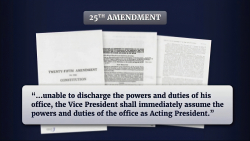
The Senior Executive Service is a little-known but essential part of the federal bureaucracy. With approximately 8,000 career staff, the SES is meant to be an elite official corps that connects the handful of political appointees to the more than 2 million federal civil servants. Its members oversee major programs and manage the operations of federal agencies.
Yet the SES is not living up to its billing. Though its creators envisioned a nimble, high-performing group modeled on private-sector leadership—both rewarded and held accountable based on performance—it has become just another part of the bureaucracy. The Trump administration has pushed to make it easier to remove SES members for poor performance, which is a good start. Now Congress should go further: by making it easier to reward top performers and attract new talent.
Finally, a reason to check your email.
Sign up for our free newsletter today.
When Congress created the SES in the 1978 Civil Service Reform Act, proponents hoped that it would offer “greater risks for greater rewards.” The law allowed SES officials to be removed from their positions more easily than other federal employees—but also made them eligible for higher pay and large bonuses. Unfortunately, as a report just three years later found, “neither the greater risks nor the increased rewards have materialized.” Bonuses were small and arbitrarily distributed, and only a single person had been removed for poor performance.
Not much has changed since. A 2017 report from the National Academy of Public Administration noted that the “vision [for the SES] was still largely unrealized.” One former government official observed that “almost every executive [was] rated as outstanding,” and the low base pay meant that bonuses were “spread like a thin layer of peanut butter across an agency’s entire executive cadre.”
No one doubts that members of the SES have important jobs. A third of them manage more than $100 million in program spending or more than 200 employees, putting their responsibilities in league with those of a large company’s vice president. Yet SES compensation pales compared with the private sector. A vice president’s salary at a company like Coca-Cola is about $400,000; compensation for a private-sector CEO managing a similar amount of revenue is even higher. The maximum regular salary for the SES, by contrast, is $225,700.
To most Americans, $200,000-plus a year sounds like wonderful pay, but that’s precisely the problem. Federal salaries are subject to political oversight, which means the average voter effectively determines what seems high or low. This leads to “pay compression” in government service. Low-skilled federal workers (those with a high school degree or less) earn much more than equivalent private-sector workers—about 40 percent more, according to one government report. Yet those with a professional degree or doctorate earn about 20 percent less than their private-sector counterparts.
Pay compression has plagued SES since its inception. Though Congress created the service to award high performers with substantial bonuses, lawmakers quickly turned on their own design—denouncing the first round of payouts and soon capping them. Today, bonuses are limited to 10 percent of total SES salaries, with additional caps on individual awards. Pay compression even works inside the service to spread the bonuses widely, instead of focusing on rewarding top employees: about 80 percent of SES members receive bonuses.
Low pay relative to the private sector is a bigger problem for the SES than for other top federal employees. Top officials outside of the SES, who are part of what is known as the General Schedule, can get pay bumps if they live in an expensive area and work overtime. Members of the SES don’t, however, which means they can end up earning less than those whom they oversee. Some federal workers today refuse promotions to the senior service since it can bring more risk and responsibilities with fewer rewards.
Since the SES constitutes less than one half of 1 percent of the federal workforce, and since workforce spending is only a small fraction of all federal spending, even a substantial jump in pay and bonuses for the service would have limited impact on the budget. The president can lift the current cap on bonuses a bit, but Congress should provide a general salary and bonus increase for the SES, along with new requirements to identify the genuine top performers and reward them for their work.
If the United States used higher pay to attract its best and brightest to senior government roles—and if those leaders could deliver real savings and efficiencies—the public would reap the rewards many times over.
Photo by J. David Ake/Getty Images
City Journal is a publication of the Manhattan Institute for Policy Research (MI), a leading free-market think tank. Are you interested in supporting the magazine? As a 501(c)(3) nonprofit, donations in support of MI and City Journal are fully tax-deductible as provided by law (EIN #13-2912529).
Source link

















